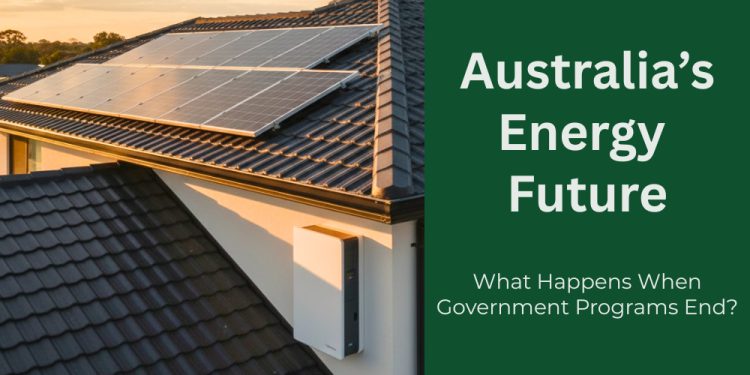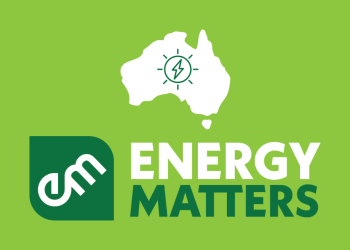Australia has led the world in household renewable energy uptake, largely due to successive, powerful government incentives. Yet, these schemes are not permanent. The critical question for homeowners, businesses, and the entire energy sector is: What happens when government energy programs end in Australia?
The context: Why government energy programs matter
Australia’s small-scale renewable incentives—especially solar and battery rebates—have driven much of household uptake. These programs help reduce upfront costs, encourage investment, and ease grid pressure.
But many are time-limited or budget-capped. When they phase out, effects ripple through consumers, industry, and the grid.
Ripple effects across stakeholders
1. Consumers & Homeowners
- Pay more out-of-pocket for solar systems and batteries
- Lower return on investment (longer payback periods)
- Hesitation to adopt new technologies
2. Solar & Battery businesses
- Lower demand → possible downsizing
- Consolidation or exit of weaker players
- Need to compete on cost, service, quality
3. Grid & Utilities
- Higher peak load stress with lower distributed storage
- Less distributed generation to relieve grid demand
- Potential for higher wholesale pricing
4. Government & Policy makers
- Reduced control over the energy transition pace
- Political pressure from constituents facing higher costs
- Need to redesign the energy policy to adapt
Solar rebate program phasing out by 2030
Below are solar rebates that have ended and will gradually phase out. The phase-out of incentives such as:
These shifts will reshape the energy landscape, compelling stakeholders to pivot towards market-driven solutions and adopt advanced technologies.
The federal solar rebate via Small-Scale Technology Certificates (STCs) is structured to phase out gradually and is expected to end by 31 December 2030. As incentives fade, solar installation costs will rise.
Households that act early get more benefit; late adopters face less support and diminished return on investment.
State-level cuts: NSW battery rebate ends
For example, the NSW Peak Demand Reduction Scheme (PDRS) battery rebate ended on June 30, 2025. This prevented dual claims on state and federal rebates.
Though the federal “Cheaper Home Batteries” program begins July 1, 2025, affected homeowners lost the chance to stack subsidies.
Now is the time to secure your energy independence; Act fast to leverage remaining subsidies and future-proof your power needs with Energy Matters.
If rebates stop solar: Immediate consequences
If subsidies disappear, the solar market faces several immediate shifts:
- Higher upfront cost — Without government rebates or Small-Scale Technology Certificates (STCs), consumers must pay the full installation cost.
- Slower adoption — Some homeowners may delay or cancel solar investments when incentives vanish.
- Market contraction — Installer businesses, manufacturers, and supply chains may see reduced demand.
- Equity issues worsen — Low-income households lose support more than wealthier ones.
This scenario is sometimes summarised as “if rebates stop solar,” meaning solar uptake will likely slow significantly without incentives.
Quantifying the effects
This table illustrates relative risks for key stakeholders when government energy programs end.
| Stakeholder | Impact when incentives end | Risk level |
| Homeowners | Higher system cost, slower uptake | High |
| Solar installers | Contracting market, lower margins | Medium–High |
| Battery manufacturers | Reduced volume, increased competition | Medium |
| Grid operators | Increased strain during peaks | Medium |
| Governments | Political backlash, emissions risk | High |
Long-term consequences
- Slower decarbonisation: Without policy support, uptake of renewables may stall, delaying carbon goals.
- Inefficient energy pricing: Markets may fail to fully capture externalities, leading to overconsumption or underinvestment in renewables.
- Growth of alternative incentives: Governments may turn to feed-in tariffs, carbon trading, or capacity markets to replace rebates.
- Increased consumer risk: Those who install later face less favourable conditions, higher costs, and possibly stranded assets.
Mitigation & transition strategies
- Gradual phase-outs
The government can taper incentives gradually rather than abruptly. - Reallocating support
Shift from blanket subsidies to targeted support for vulnerable households. - Market-based mechanisms
Use auctions, contracts for difference (CfDs), or carbon pricing to replace direct rebates. - Encourage private finance
Stimulate green loans, leasing models, and power purchase agreements (PPAs). - Public awareness & planning
Inform consumers early so they can time their investments ahead of the program’s end.
When programs end, what can you do?
- Monitor government announcements – Did you know Energy Matters is Australia’s largest renewable news, blog, and educational resource? Subscribe to Energy Matters’ weekly newsletter to stay updated on incentives, rebates, and solar product offers.
- Explore financing options (e.g. solar loans, leasing)
- Invest before the phase-out or program closure
- Consult a trusted solar/battery provider in your state
Use Energy Matters’ easy-to-use solar power and battery storage calculator to determine the size of your solar system with storage! Our solar calculator will generate performance information and potential savings.
We can send this information to 3 of our pre-vetted and trusted local installers in your area to receive obligation-free solar quotes and take the first step towards true energy independence!

Seizing your independent energy future
The conclusion of Australian government energy programs marks a maturation point, not an endpoint, for the renewable energy sector. The era of foundational incentives is yielding to a market defined by efficiency, integration, and sustainable infrastructure. Consumers must now lean on smart technology and long-term value to secure their power.
Going solar with confidence
Don’t wait for the last rebate to vanish. Take action now—don’t wait until incentives vanish. At Energy Matters, we guide you every step. Contact us today with Energy Matters about solar and battery solutions tailored for an independent, post-subsidy future.
Energy Matters is here to guide you every step of the way. We help Australian home and business owners receive personalised solar quotes through our large network of high-quality solar installers. We only work with reputable solar companies that have a proven track record of delivering high-quality solar systems.















